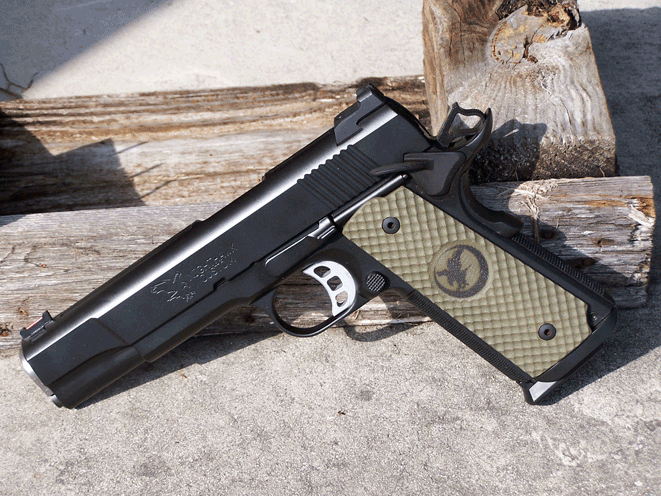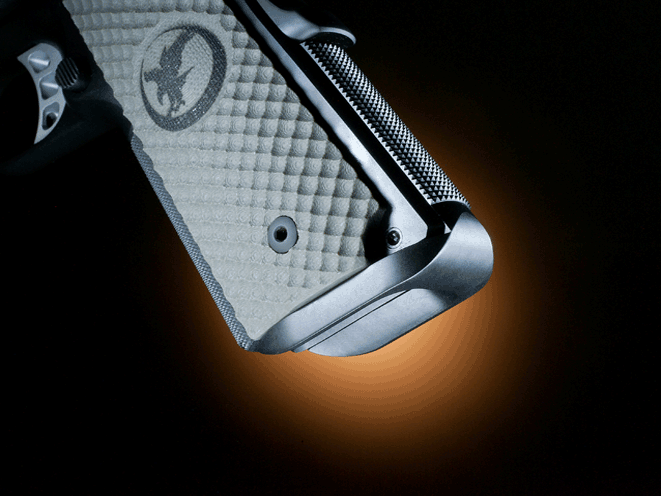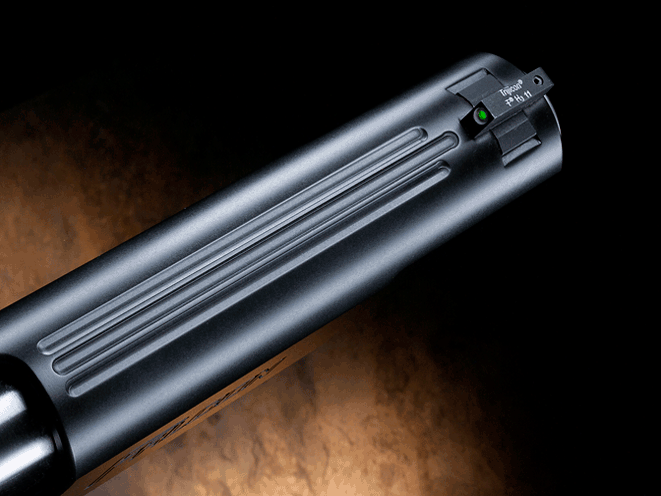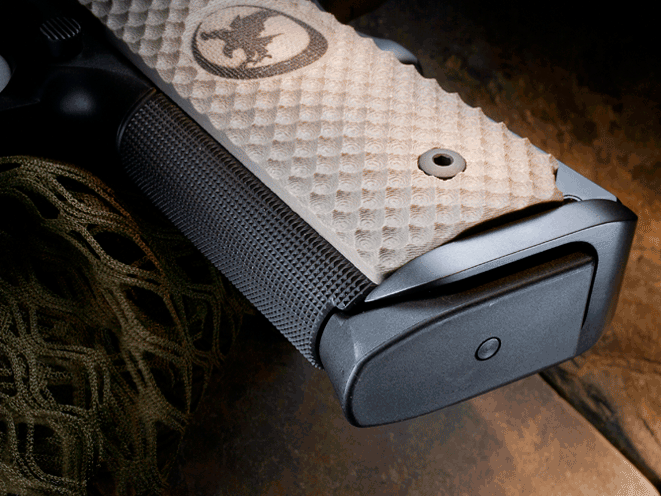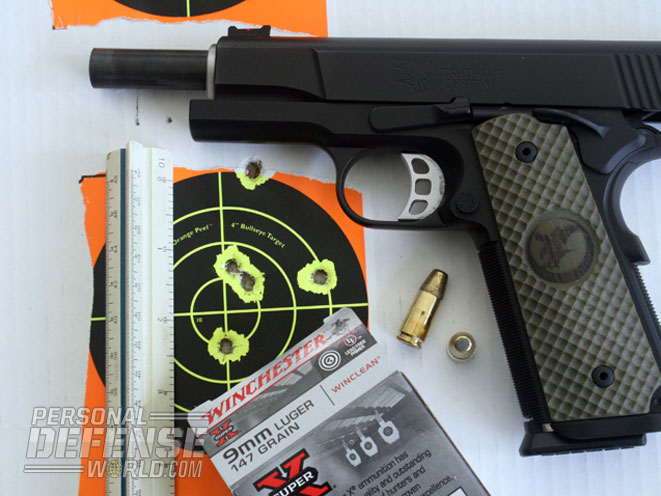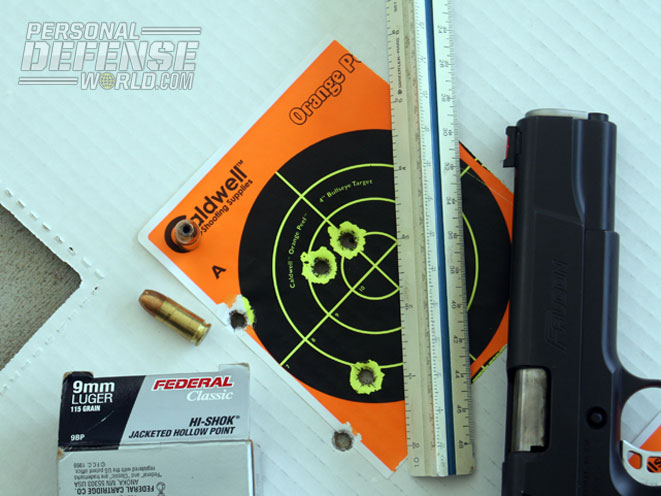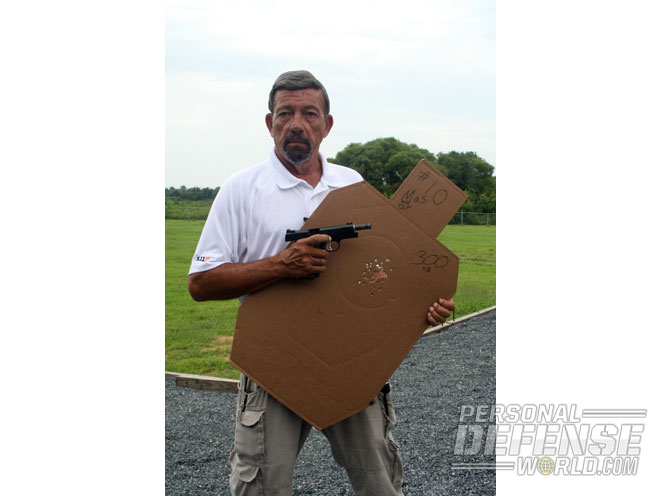My long-awaited Nighthawk Falcon had finally arrived, and my significant other and I were cleaning it after its introductory shots at our on-premises range. “The finish is kind of gray,” she commented. “What’s the color of a falcon in nature, anyway?”
“I don’t know,” I muttered. “For falcons, look it up in Audubon, I guess. For Falcons, the company has a lot of optional finishes.” She rolled her eyes. “What’s with the bird names?”
“Beats me. Maybe the founders liked birds. ‘Falcon’ goes pretty well with ‘Nighthawk,’ don’t you think?” She looked at me, then looked at the gun. Then looked back at me. “Let’s see. It’s gray. You’re getting grayer. I think they named it after the wrong bird.” She paused and added, “I think I’m going to call this gun the Old Gray Coot.” And so, in our household, this particular Nighthawk Falcon 9mm became the “Old Gray Coot” forever more.
Advertisement — Continue Reading Below
It was ironic that we’d have that conversation, since between us we represented at least three of the target markets for a high-end 1911 pistol chambered for the 9mm cartridge. Let’s look at that for a minute.
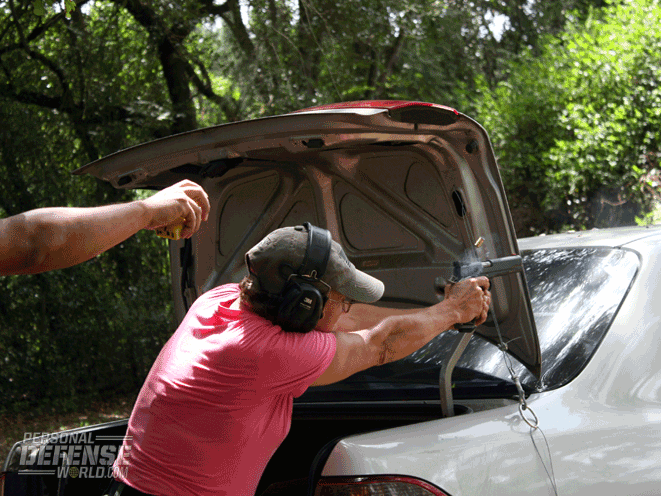
She and I both shoot quite a few International Defensive Pistol Association (IDPA) competition matches. There are five separate gun divisions, two of which—Stock Service Pistol (SSP) and Enhanced Service Pistol (ESP)—allow the shooter to have 11 rounds in the gun. The limit is nine cartridges for the Custom Defense Pistol (CDP) division for the .45 ACP, and only six for each of the revolver divisions. If you’re competing for a specific title—High Female, for example, or High Distinguished Senior—if gender, age or occupation otherwise qualify you for the category, all five gun divisions shoot equally. That means two reloads with your CDP auto if there’s an 18-shot stage, and three if you’re shooting Stock Service Revolver or Enhanced Service Revolver. But, with an 11-shot 9mm or .40 in the ESP or SSP divisions, there will be only one reload. Assuming all other things to be equal, you definitely want an 11-shooter if you want to win the category. With 10 rounds of 9mm in the magazine and one in the chamber, a full-size 1911 in 9mm fills the bill, with the single-action design putting it and its user into the ESP category.
My significant other has won more than one match overall, beating the representatives of the “Testosterone Tribe,” as well as her fellow members of the “Estrogen Sisterhood.” However, most of the time she’s shooting for High Female honors. She doesn’t have long fingers, and the trigger reach of the 1911 has long been known to make that type of handgun an excellent fit for female shooters. With its single-stack magazine and proportional grip frame design, a petite woman’s thumb can reach the magazine release button more easily on a standard-size 1911 than where the same button is placed on a fat-butt, double-stack autopistol. This makes reloads proportionally faster.
Advertisement — Continue Reading Below
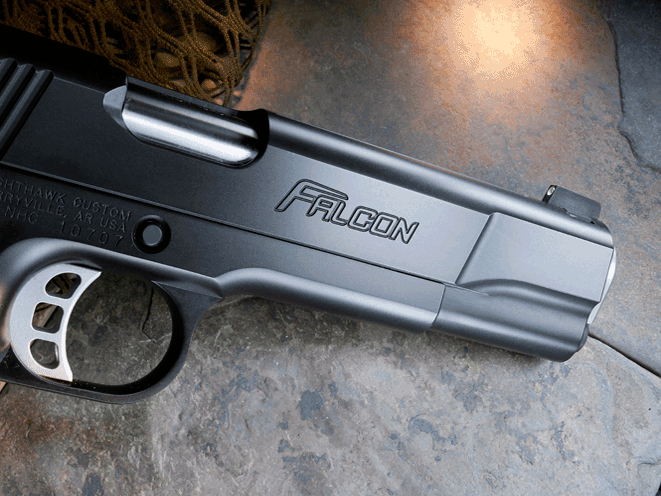
A number of match-shooting women have gravitated to the 9mm for these reasons, not to mention the soft, easy recoil of this all-steel pistol in the 9mm chambering. One who comes to mind is Terri Strayer, former Florida state champion female in IDPA. I’ve seen her kick much butt with her 9mm Nighthawk Falcon. At the Pro-Arms Invitational a while back, there was a side match that involved a 100-yard gong. Terri cleared her 9mm Falcon from its holster and nailed it with her first shot, from standing, beating all contestants of both genders, including at least one USPSA Grandmaster and two IDPA five-gun Masters. I’ve watched Rebecca Potter of Washington State shoot some awesome stages with her Nighthawk Falcon 9mm. At the IDPA World Championships, I was on the same squad as teenage Nikki Pinto of Arkansas, and saw firsthand how she became one of the best of today’s crop of young competition shooters. Her choice of pistol? The Nighthawk in 9mm.
RELATED: Nighthawk Talon 9mm
I represent another category, the Geezer Market. One of the most respected guns-and-tactics writers is my old friend Walt Rauch. A few years ago, he wrote about how many of his fellow senior citizens who had been lifelong .45 ACP men were gravitating to the 9mm, largely because recoil takes a disproportional toll on aging hands, especially in long courses or matches that involve a great many rounds. Arthritis. Carpal tunnel syndrome in a sense, since the older you are, the longer you’ve likely done the same repetitive movements. Use your imagination to tally the rest of the age-related ailments involved; since I’m in the same age demographic, it’s too depressing for me.
Advertisement — Continue Reading Below
For gals and geezers alike, another big advantage of the 9mm 1911 is that it’s easier to rack the slide. With a heavy slide originally designed for a .45 ACP, the light-kicking 9mm cartridge just won’t run the gun unless it has a recoil spring much lighter than what you’d need for a .45 ACP. This means that, by simply cocking the hammer to relieve mainspring pressure, it takes much less strength and effort to actuate the slide of a 9mm 1911 than almost any other centerfire auto-loading pistol out there.
Background
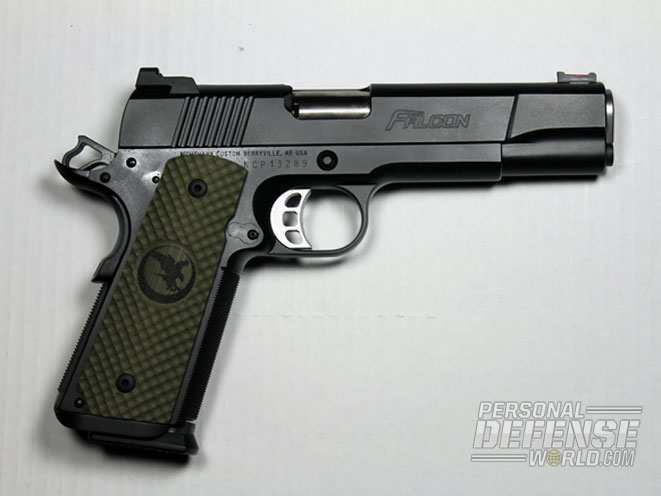
Most 1911-style 9mm pistols are finicky about cycling, especially feeding. The reason is simple: the 9×19 cartridge is distinctly shorter overall than the .45 ACP round for which the 1911 was originally designed and “dimensioned.” Over the years, different approaches have been taken to the magazines to ameliorate this. A long dimple down the front of the mag, or a shim running down the back of it to hold the cartridges more forward in the stack. But it took more than that to fix the problem.
Advertisement — Continue Reading Below
RELATED: Nighthawk Custom Training Academy Introduces New Course
I had noticed almost since the 9mm Nighthawks came out that they worked. More than once, I shot various events with Jon Hodoway, captain of the Nighthawk Custom Pistol Team, and he often chose the 9mm over the .45. His Nighthawk 9mm never missed a beat. When teaching a class for him at the Nighthawk Custom Training Academy in Centerville, Arkansas, I took an extra day to tour the Nighthawk factory in Berryville, Arkansas, and pick the brains of the engineers. They explained some of the holistic approach they had taken to iron out the bugs that accompanied the cohabitation of the 9mm cartridge and the full-size 1911 pistol.
Because their modifications are proprietary, I’ve been asked not to discuss them in detail in print. However, the chamber and feed ramp are cut in ways Bob Marvel and Shawn Armstrong came up with after extensive experimentation. They found that most magazines would hit the ejector when slammed into the gun, leading to malfunctions and breakage, and came up with their own redesigned ejector for the 9mm Nighthawk to prevent that.
Advertisement — Continue Reading Below
Finally, Nighthawk determined some-thing I had already come to discover separately: that the most reliable 10-shot 9mm magazine on the market was the Wilson Combat Elite Tactical magazine. I understand that these will now be standard with Nighthawk.
After that experience, I decided it was time I owned one and placed the order. It took some months—word has gotten out on how well these guns work, and they are heavily backlogged on orders—but I finally had my own in my hands as of the first quarter of 2013. The sights weren’t quite right for elevation, but a quick trip back to the factory (no charge) fixed that. The test was soon underway.
Range Test
Advertisement — Continue Reading Below
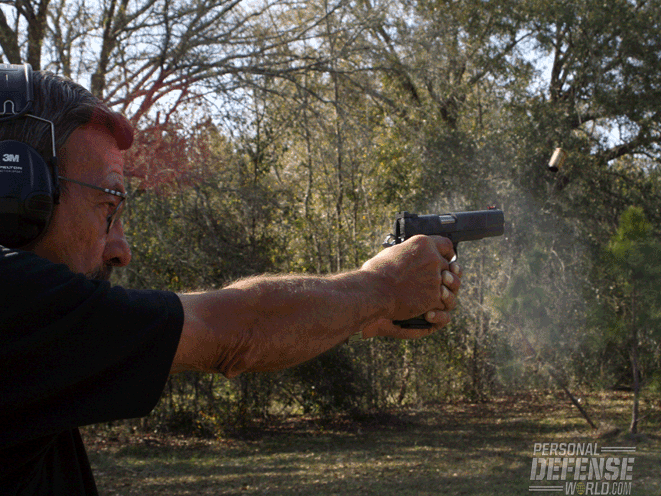
I put this gun on a Matrix rest atop a concrete bench 25 yards from the targets. Three loads of known high accuracy were selected to represent the three most popular bullet weights in 9mm today. Each was measured once for the overall five-shot group, encompassing the farthest-apart bullet holes center to center. Then, a second measurement was taken of the best three of those hits, which tends to factor out unnoticed human error. I’ve found this measurement gives an excellent prediction of what the same gun/ammo combination will deliver for all five shots when secured in a machine rest.
Federal’s appropriately named Classic 115-grain jacketed hollow point (JHP) has always been match-accurate. (It also earned a pretty good track record for a standard-pressure 9mm as a “man-stopper” over the decades.) While it has often proven one of the most accurate load while bench-testing other 9mm pistols, it didn’t this time. The five shots went into 2.85 inches, with the tightest three in 2 inches.
Advertisement — Continue Reading Below
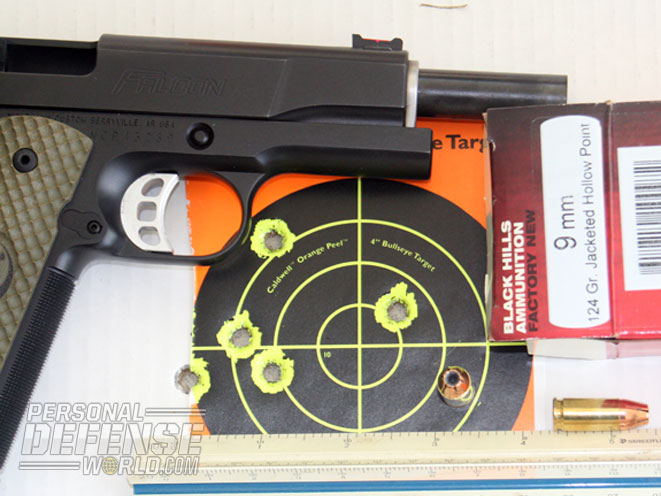
The next heaviest bullet weight used was 124 grains, and another famously accurate 9mm JHP was chosen, the virgin “red box” line from Black Hills Ammunition. The measurement for all five shots measured 2.55 inches, with the best three clustering a hair under 1 inch.
RELATED: Gun Review – Nighthawk Custom Costa Compact
Advertisement — Continue Reading Below
Finally, it was time for an American favorite, the 147-grain subsonic, the heaviest 9mm bullet in common use. The choice to represent this genre was Winchester’s Super-X, the most accurate reduced-lead bullet I’ve used in 9mm, and a load I’ve seen win a lot of practical shooting matches. It tied the Black Hills with an identical 2.55-inch five-shot group, barely losing the tiebreaker with a best three-shot group of 1.15 inches.
This was extremely consistent for three different ammo brands with three different bullet weights. The 147-grainers tended to group slightly higher than the other two. Let’s see: five-shot groups of 2.55, 2.55 and 2.85 inches—all measured to the nearest 0.05 inches. Best three-shot groups indicating the gun and ammo will group between 1 and 2 inches at 25 yards. Point-of-aim/point-of-impact coordinates pretty much “on” with all three at the same distance. I don’t think I’ll have to worry much about which ammo is in the shooting bag the next time I take this pistol to the range.
Migratory Coot
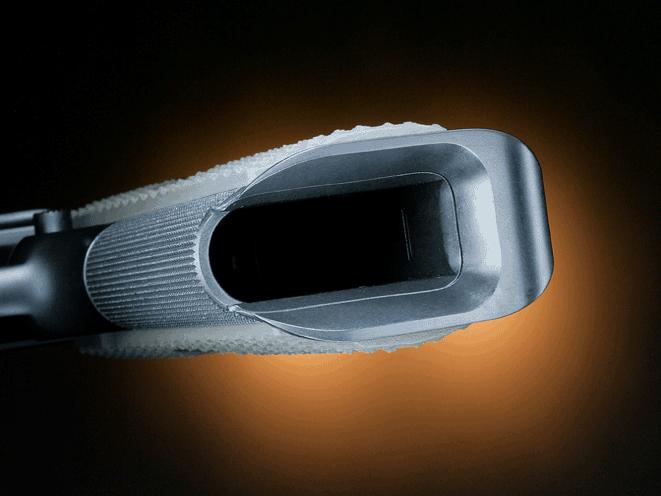
The coot is a migratory bird, I’m told. That’s also true of the old coot now using this pistol. For a few months of 2013, I had this gun along on training tours, and shot it when I could. I liked the Heinie Ledge rear sight. As its name implies, it’s ideal for one-handed manipulation since it facilitates catching the edge of the sight on holster or belt to rack the slide for loading, unloading, reloading or jam clearing. It wasn’t hard to get used to the bright red fiber-optic front sight for any kind of daylight shooting, either. It came with a flared magazine well, and this definitely improved reloading speed.
RELATED: Nighthawk Custom Falcon .45 ACP
Along the way, a lot of students and fellow instructors got to handle it. My brother geezers particularly appreciated the soft recoil. Darcy Kemp shot it without preparation during a bitterly cold and sleety day in Illinois, and despite her being a southpaw and me not having ordered it with an ambidextrous safety, she shot a dynamite score. In Indiana, Gail Pepin shot it during a pacesetter qualification and nailed a 100 percent score. I heard no complaints about the pistol at all.
The gun “carried well.” It came from the factory with the 4.5-pound trigger pull I had asked for, which, with the on-safe 1911, is generally considered safe for carry and duty. There were no sharp edges to dig into the body even when worn inside the waistband for weeks at a time. It came with golf-ball-style VZ grips, and while they didn’t catch clothing or wear on it that I could see, they did chafe a bit when carried against bareskin under an untucked shirt.
Houzenga Trigger
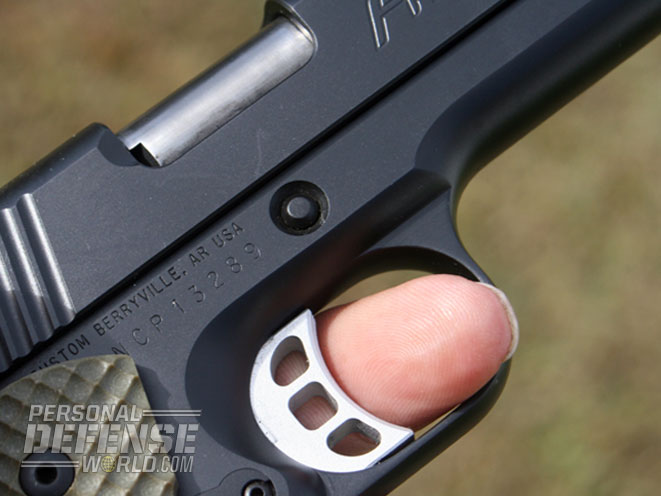
Bob Houzenga, who was a national-champion-level shooter back when he had time for the shooting tournament circuit, was one of the many who appreciated the factory workmanship that went into this Nighthawk. We were teaching together one week when he commented that the only thing this gun needed to make it National-Championship-ready would be a lighter trigger. I had been thinking seriously about using this gun at the IDPA Nationals a few months later and knew there would be a lot of short-exposure double-tap targets that could benefit from a controlled “trigger slap.” That technique requires a very light trigger pull. I knew that Houzenga was famous for doing great trigger jobs and had shot many of his competition guns in the past. I took a deep breath and turned the Nighthawk over to him for a match trigger job.
The pistol came back with an almost telekinetic 2.9-pound pull. The trigger on the factory gun had been crisp and sweet at 4.5 pounds. It was even sweeter after Houzenga worked his magic. A pull this light took the Nighthawk out of contention for carry, of course, and this particular specimen now became a dedicated target pistol.
Contact Houzenga at midwesttraininggroup.net. A job like the fabulous one he did for me would run about $100 without parts, extra if new parts were required. He estimates a two-week turnaround time.
Final Notes
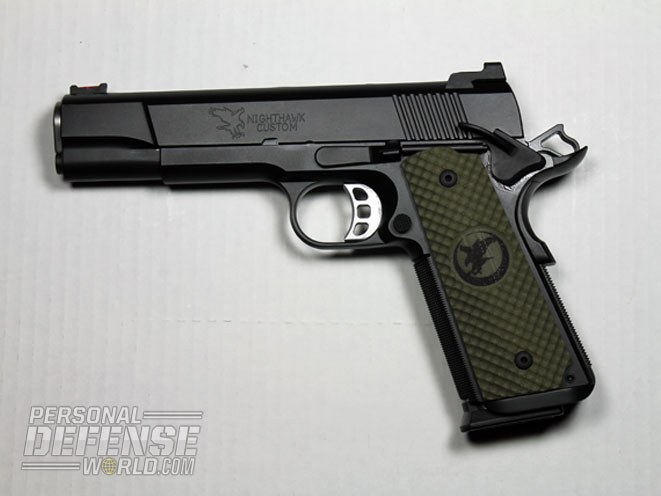
In the end, I didn’t shoot this pistol in the Nationals. The only reason why was that, even with the flared magazine well, it still takes me a fraction of a second longer to reload a single-stack than a double-stack that also has a “flower pot” on the bottom. The double-stack magazine tapers at the top, aiding insertion, and no one has yet figured out how to taper the top of a single-stack 1911 magazine.
RELATED: Ultra-Thin 1911 Concealed Carry Nighthawk T4 9mm
Nonetheless, this pistol will be coming to some matches with me. Aesthetically, I enjoy the glassy smooth “ride of the slide” whenever I manipulate it. I’m happy with its long-proven “Nighthawk 9mm reliability.” And, geezer that I am, the pistol’s super-soft recoil is something close to orthopedic. Truth to tell, my Falcon 9mm is becoming a personal favorite.
That businesslike gray finish has stood up very well in all kinds of outdoor shooting weather, including horizontal sleet, and its only shortcoming is that it provokes mean comments from cruel younger women when found in the hands of older males. I was perfectly comfortable with it as a carry piece before I took the plunge to a “target only” trigger pull weight.
In a world where reliable 11-shot 9mm 1911s are rare birds, the functionality of the Nighthawk Falcon in this caliber combines with its outstanding workmanship and “pride of ownership” factor to make it absolutely worth its $3,295 suggested retail price. This old coot expects to be flying with the 9mm Nighthawk Falcon for some time.
Specifications Nighthawk Falcon
* Caliber: 9mm
* Barrel: 5 inches
* OA Length: 8.63 inches
* Weight: 40 ounces (empty)
* Grips: G10
* Sights: Heinie Ledge
* Action: SA
* Finish: Perma-Kote
* Capacity: 10+1
MSRP: $3,295
Performance
* Black Hills 124 JHP – 2.55
* Federal Classic 115 JHP – 2.85
* Winchester 147 Super-X – 2.55
* Bullet weight measured in grains, and accuracy in inches for best five-shot groups at 25 yards.
For more information, call 877-268-4867 or visit http://www.nighthawkcustom.com.
